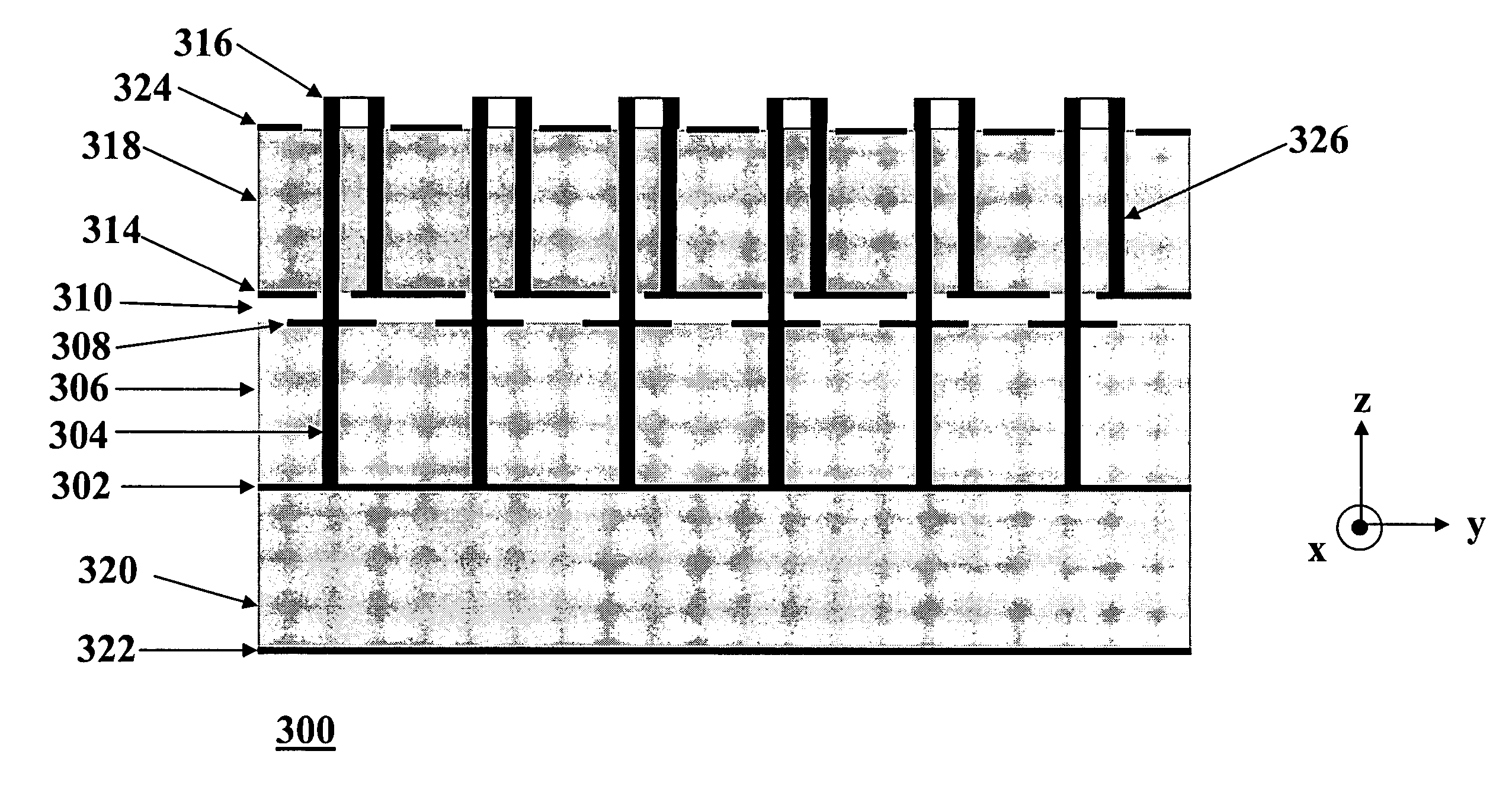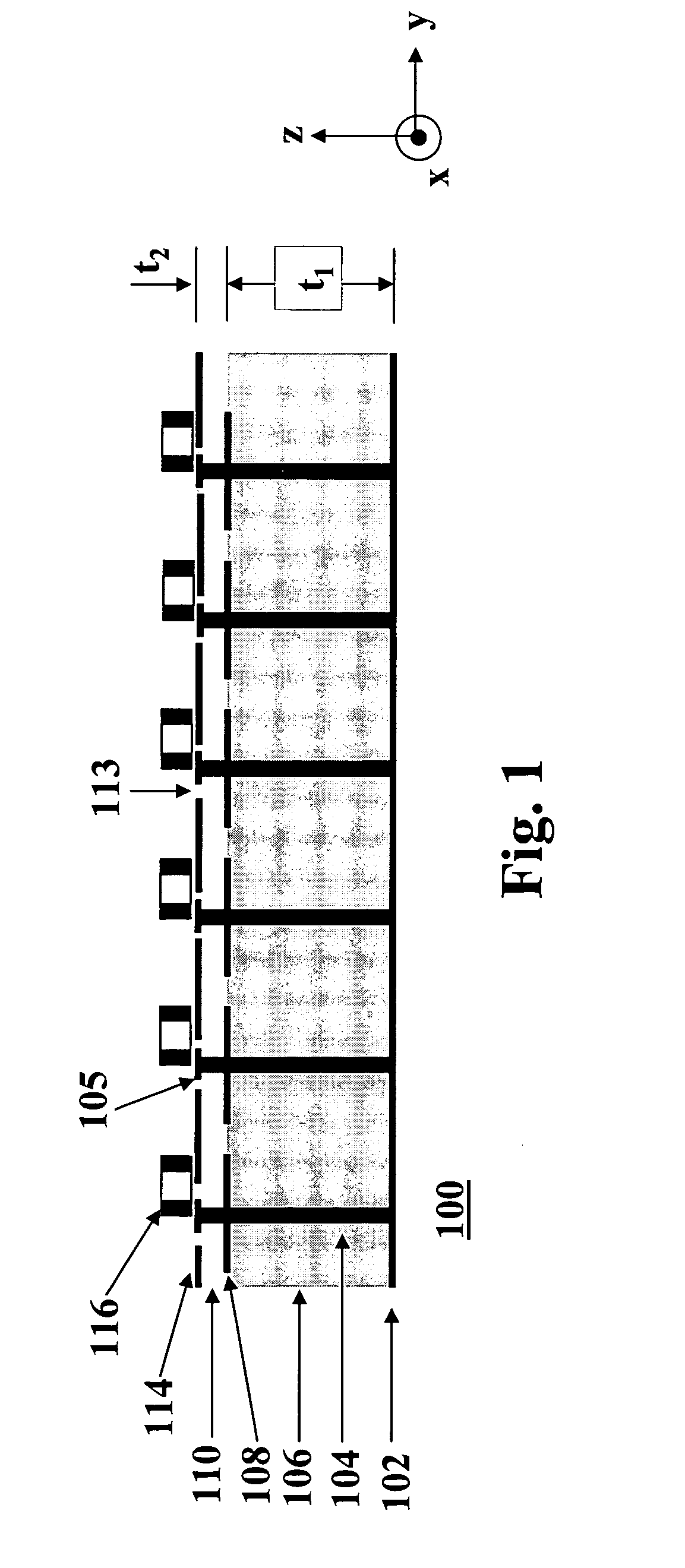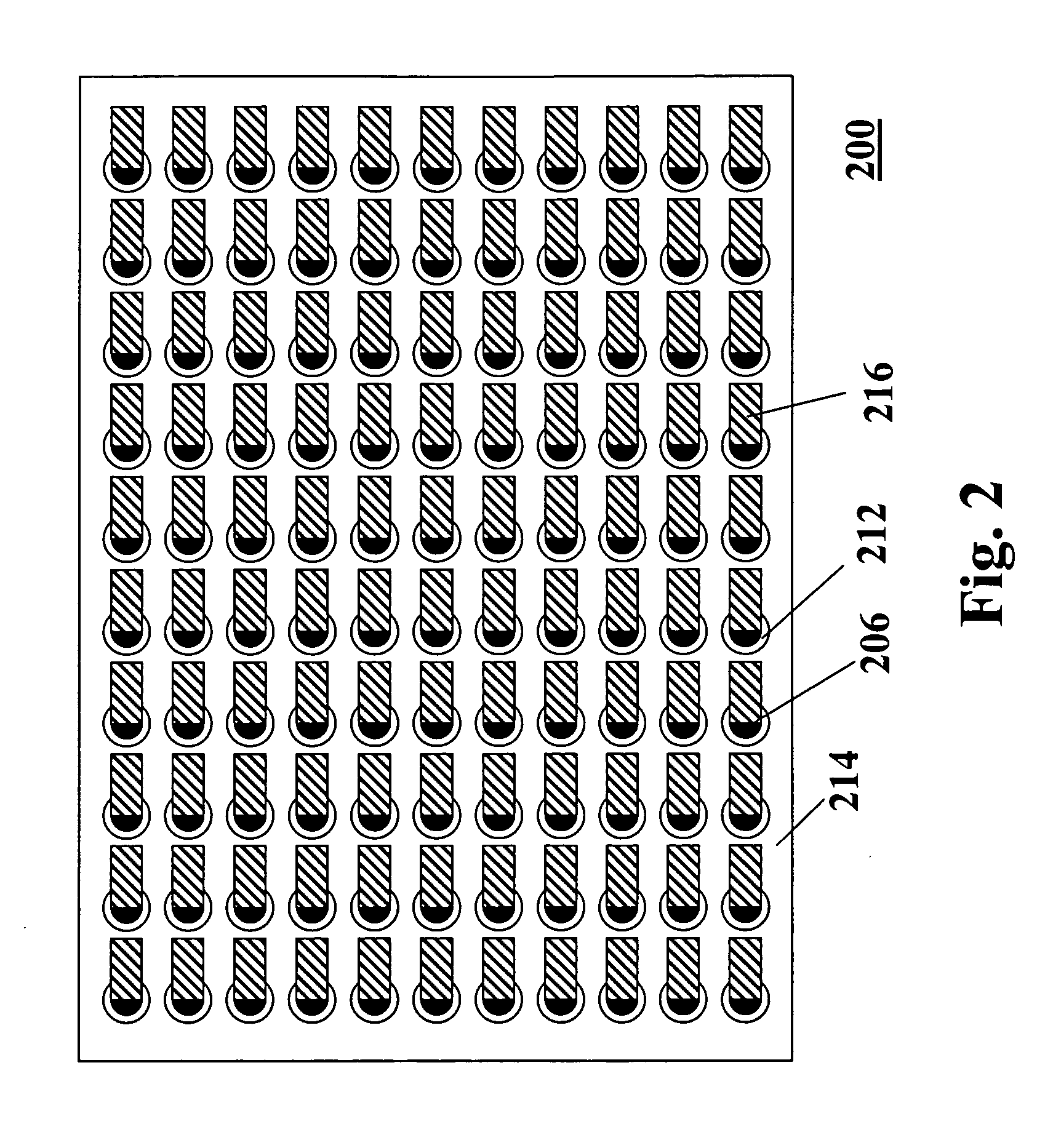Circuit and method for enhanced low frequency switching noise suppression in multilayer printed circuit boards using a chip capacitor lattice
a multi-layer printed circuit board and chip capacitor technology, applied in the direction of cross-talk/noise/interference reduction, printed capacitor incorporation, printed element electric connection formation, etc., can solve the problems of increasing board thickness, not usually desirable, and increasing cost, so as to improve the suppression of electromagnetic coupling and switching noise
- Summary
- Abstract
- Description
- Claims
- Application Information
AI Technical Summary
Benefits of technology
Problems solved by technology
Method used
Image
Examples
first embodiment
[0046] Referring now to the drawings, FIG. 1 illustrates a parallel plate wave guide (PPW) 100 containing a transverse electromagnetic (TEM) mode suppression circuit. FIG. 1 is a cross-sectional view of the PPW 100. The PPW 100 includes a lower metal layer 102, an upper metal layer 114. Disposed a distance t2 from the upper metal layer is a third metal layer 108 which forms buried patches. Metal layers 108 and 114 are separated by a dielectric layer 110 of thickness t2. Metal layers 102 and 108 are separated by a dielectric layer 106 of thickness t1. An array of conductive rods 104 of length t1+t2 and radius a extend between the lower layer 102 and the upper layer 114. Unless otherwise noted, the dimensions shown in the figures do not include the thickness of the conductive surfaces, which may be a relatively thin metal. The conductive rods may be solid metal poles or may be plated through holes (vias) whose edges are coated with metal but whose centers remain empty. The conductive ...
embodiment 800
[0059] In the embodiment of FIG. 8, SMT capacitors 816 and 828 are located on both sides of the PCB 800 and are connected to the Vcc plane 814 and the ground plane 802 through vias 804 and 826. Again, only one dielectric layer 806 is used to separate the Vcc plane 814 and ground plane 802 since there are no buried patches. The signal layers 822, 824 contain traces that carry digital transmissions between various chips and also make connections to discrete components in addition to the capacitors 828. Dielectric layer 820 separates the ground plane 802 from signal layer 822, while dielectric layer 818 separates the Vcc plane 814 from signal layer 824. This configuration yields more capacitance per unit cell than those having a capacitor on only one side of the board. Alternatively, the embodiment 800 allows greater flexibility in the PCB layout since capacitors may be removed on one side of the board in order to make room for chips while still remaining on the opposite side of the bo...
PUM
 Login to View More
Login to View More Abstract
Description
Claims
Application Information
 Login to View More
Login to View More - R&D
- Intellectual Property
- Life Sciences
- Materials
- Tech Scout
- Unparalleled Data Quality
- Higher Quality Content
- 60% Fewer Hallucinations
Browse by: Latest US Patents, China's latest patents, Technical Efficacy Thesaurus, Application Domain, Technology Topic, Popular Technical Reports.
© 2025 PatSnap. All rights reserved.Legal|Privacy policy|Modern Slavery Act Transparency Statement|Sitemap|About US| Contact US: help@patsnap.com



